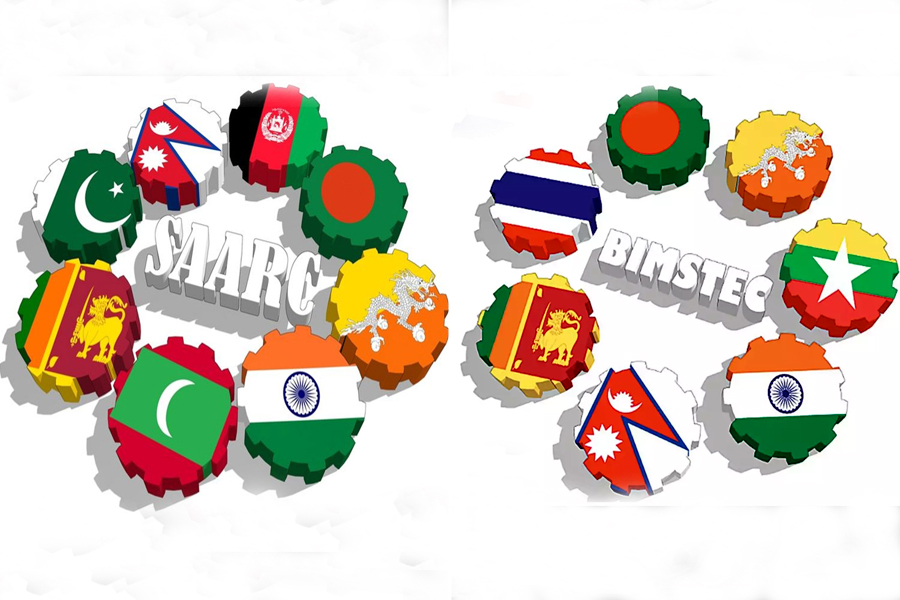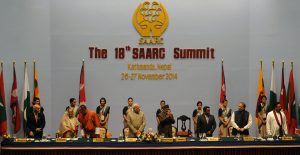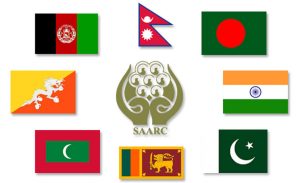
In November 2014, the 18th South Asian Association for Regional Cooperation (SAARC) summit adopted a 36-point Kathmandu Declaration, entitled Deeper Integration for Peace and Prosperity, promising necessary cooperation and collaboration among the member states.
As per the announcement, Pakistan was scheduled to host the 19th SAARC summit in November 2016. However, in September 2016, after a terrorist attack on the Indian Army brigade headquarters near the town of Uri, Baramulla, Kashmir, which was allegedly conducted by the Jaish-e-Mohammed insurgents, the Indian side decided to boycott the summit. Soon after, Bangladesh, Afghanistan, Sri Lanka, and Bhutan followed suit and also denied attending the summit.
Everyone knows the summit is not held yet.
On December 8, 1985, the key architects of SAARC passed its charter stating the regional body is being established for promoting peace, stability, amity, and progress in the region through strict adherence to the principles of the United Nations Charter and Non-Alignment.
But, a failure to conduct a summit even in nine years is a sign of the failure of regional cooperation, which paints a bleak picture of the future of the regional bloc.
So why did the regional body fail? Here are the major reasons.
1. India-Pakistan conflict
The ongoing rivalry between India and Pakistan has its root in the partition of British India in 1947 and the formation of separate states. The two countries have a long history of conflict and disputes over several issues such as the disputed region of Jammu and Kashmir, disagreements over water resources and control of the Siachen glacier, and the loss of East Pakistan 9as Bangladesh).
Additionally, there are allegations of terror connections and fear of Indian domination. Regarding the involvement of global organisations in the Kashmir conflict, India thought that the United Nations, which was dominated by the United States and had a mutual defence agreement with Pakistan, would always support Pakistan. Therefore, since the 1960s, India has not accepted the UN’s decision to have an international vote on the issue.
The truth is that the SAARC’s future is closely tied to the gravity of conflict and cooperation between India and Pakistan. The ongoing rivalry between India and Pakistan should not be the reason for the failure of an organisation that has a nearly 38-year history.
2. The Taliban’s takeover of Afghanistan
The Taliban takeover of Afghanistan in 2021 had a significant impact on the SAARC and the region as a whole. The other members of SAARC did not recognise the Taliban government in Afghanistan, which consequentially delayed the appointment of the SAARC secretary-general.
The rise of the Taliban has had a significant impact on the security and stability of South Asia. The Taliban’s strict interpretation of Islamic law, human rights abuses, and harbouring of terrorist groups such as Al-Qaida, were major concerns for many of the countries in South Asia.
Additionally, the Taliban’s close relationship with Pakistan’s military and intelligence agencies led to increased tensions between Pakistan and its neighbours, particularly India. The instability in Afghanistan also led to increased tensions between Pakistan and India as both countries accused the other of supporting the Taliban. Furthermore, the Taliban’s control of Afghanistan allowed it to become a major transit point for the illegal drug trade, which had a negative impact on the region’s collective security and long-term stability. This is one of the primary causes of the nine-year inactivity of the SAARC.
3. The Tamil issues in Sri Lanka
The long ethnic conflict between the Sri Lankan government and the Tamil minority has had a significant impact on the SAARC. The conflict, which began in the 1970s, has resulted in widespread human rights abuses and has led to the displacement of thousands of Tamils from their homes. The government’s military operations against the Tamil Tigers (LTTE) in the 1990s led to a large number of civilian casualties and created a humanitarian crisis.
The conflict has had a negative impact on regional stability and security, as it has led to increased tensions between Sri Lanka and other SAARC member states, particularly India. The Indian government has been involved in the peace process and has provided humanitarian assistance to the Tamils, which has led to increased tensions with the Sri Lankan government. The conflict has also had a negative impact on the economy of Sri Lanka and the region as a whole.
4. Sri Lanka’s economic crisis
Sri Lanka’s economic crisis has had a significant impact on SAARC and the region as a whole. The country has been facing a severe economic crisis since 2018, which has been characterised by high levels of debt, inflation, and a balance of payments crisis. The economic crisis in Sri Lanka has led to a decrease in regional trade and investment, as the country is a major player in the South Asian economy. This has had a negative impact on the economies of other SAARC member states, particularly those that have close economic ties with Sri Lanka such as India and Bangladesh.
Overall, Sri Lanka’s economic crisis has had a negative impact on the economies of other SAARC member states and on regional stability and security.
What next?

What went wrong with SAARC while similar regional formations such as the EU, BIMSTEC, and ASEAN are successful elsewhere seems very important to understand. Some SAARC member countries have continued to work on regional cooperation through other initiatives and forums such as BIMSTEC. But what we need to understand is SAARC is not formed just because of geographical contiguity and shared cultures; the region also has common aspirations and joint challenges to face for ensuring a secure and quality life and then seeking the rightful place for one-fifth of humanity in the contemporary world.
The failures of the individual leaders of a member state should not be taken as the complete failures of the body of SAARC. No country, bigger or smaller, can achieve solid success in this interconnected world as the country’s geo-economic prospects are influenced by regional dynamics and spatial considerations.
The SAARC countries need stronger institutions and legal frameworks to ensure that government actions are open to public inspection. SAARC is technically still alive, but it has been largely inactive and facing multiple challenges. It is uncertain if the organisation will be able to overcome these challenges and revive its role as a regional forum in the future. As the current chair of SAARC, Nepal bears the responsibility of determining how to revitalise the organisation.






















